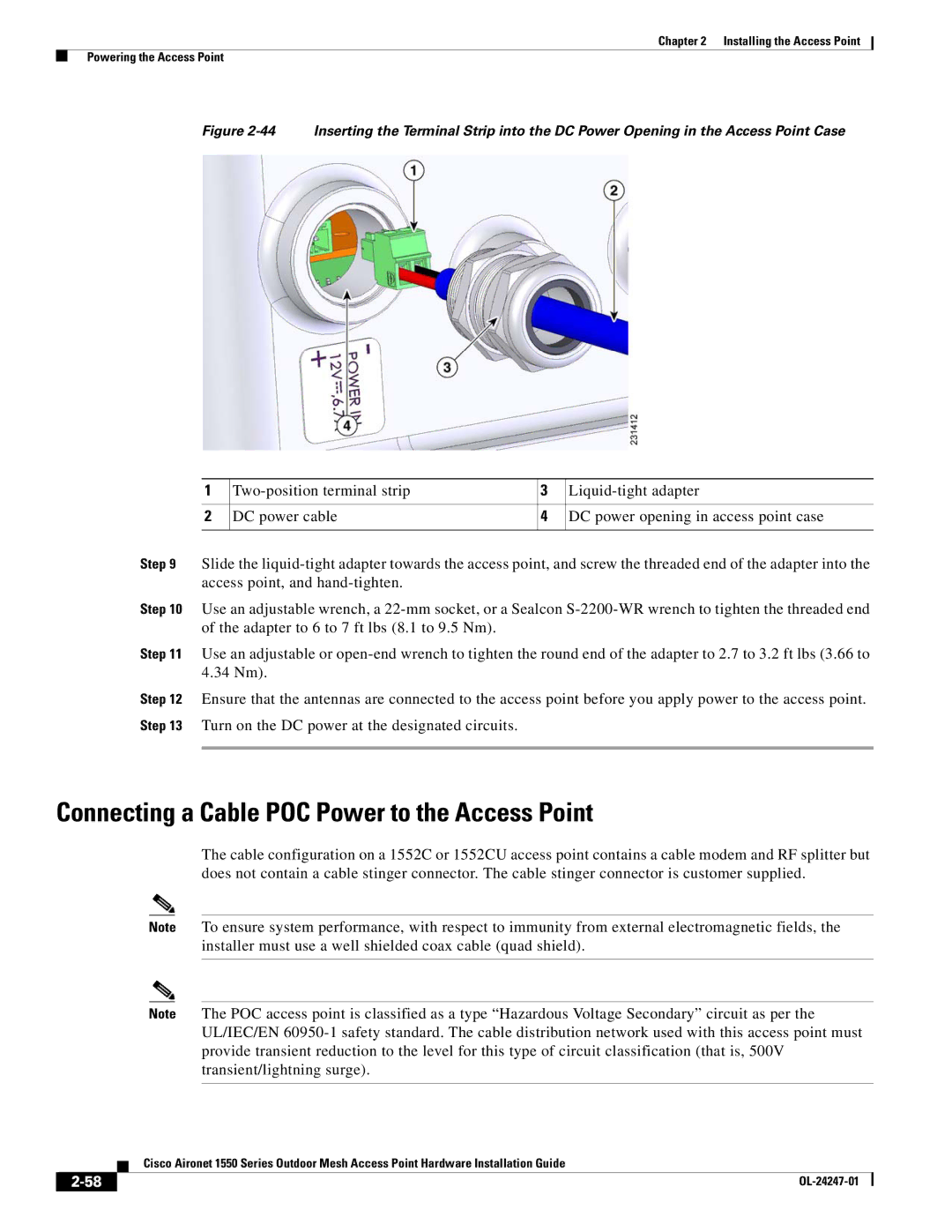
Chapter 2 Installing the Access Point
Powering the Access Point
Figure 2-44 Inserting the Terminal Strip into the DC Power Opening in the Access Point Case
1 | 3 | ||
|
|
|
|
2 | DC power cable | 4 | DC power opening in access point case |
|
|
|
|
Step 9 Slide the
Step 10 Use an adjustable wrench, a
Step 11 Use an adjustable or
Step 12 Ensure that the antennas are connected to the access point before you apply power to the access point. Step 13 Turn on the DC power at the designated circuits.
Connecting a Cable POC Power to the Access Point
The cable configuration on a 1552C or 1552CU access point contains a cable modem and RF splitter but does not contain a cable stinger connector. The cable stinger connector is customer supplied.
Note To ensure system performance, with respect to immunity from external electromagnetic fields, the installer must use a well shielded coax cable (quad shield).
Note The POC access point is classified as a type “Hazardous Voltage Secondary” circuit as per the UL/IEC/EN
| Cisco Aironet 1550 Series Outdoor Mesh Access Point Hardware Installation Guide |
